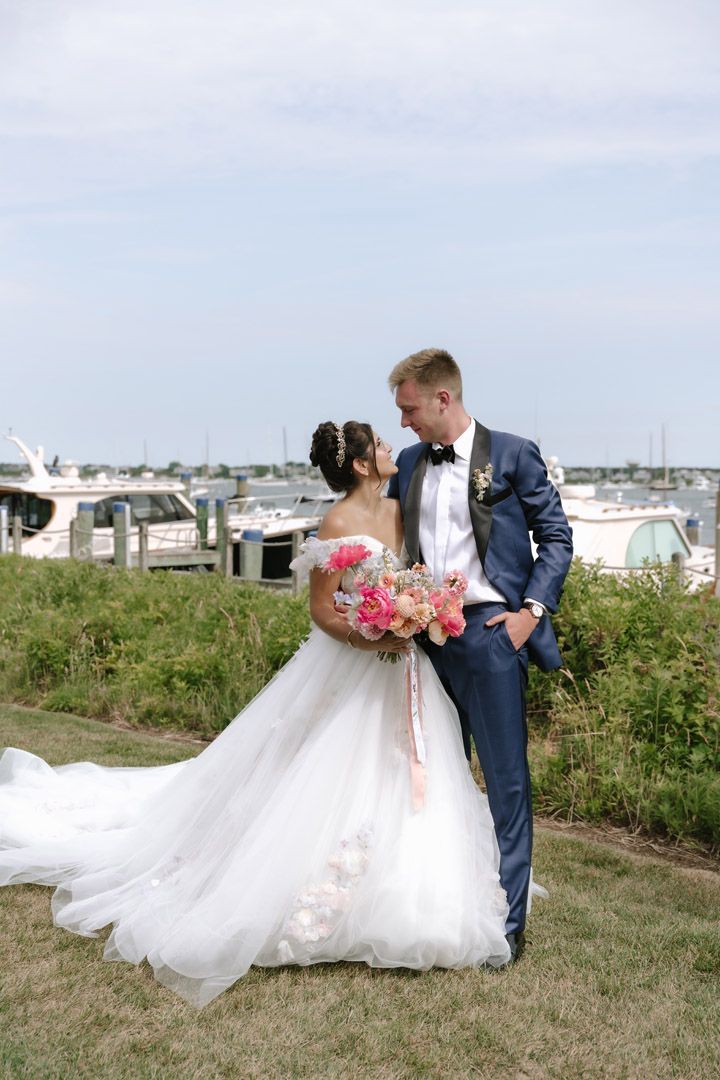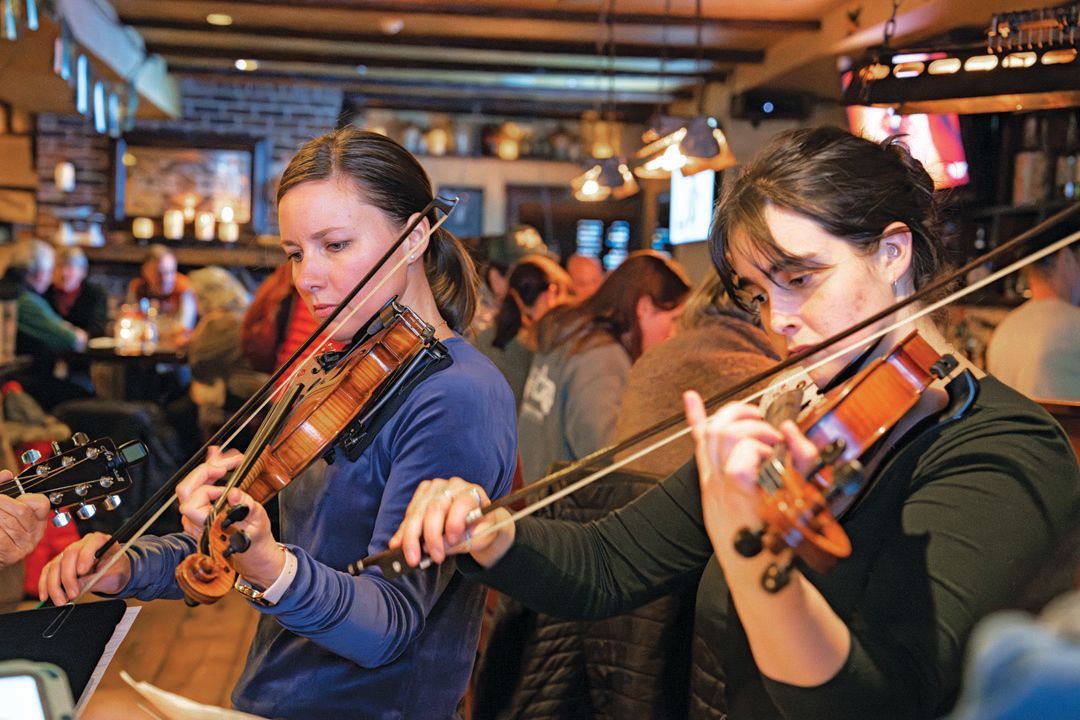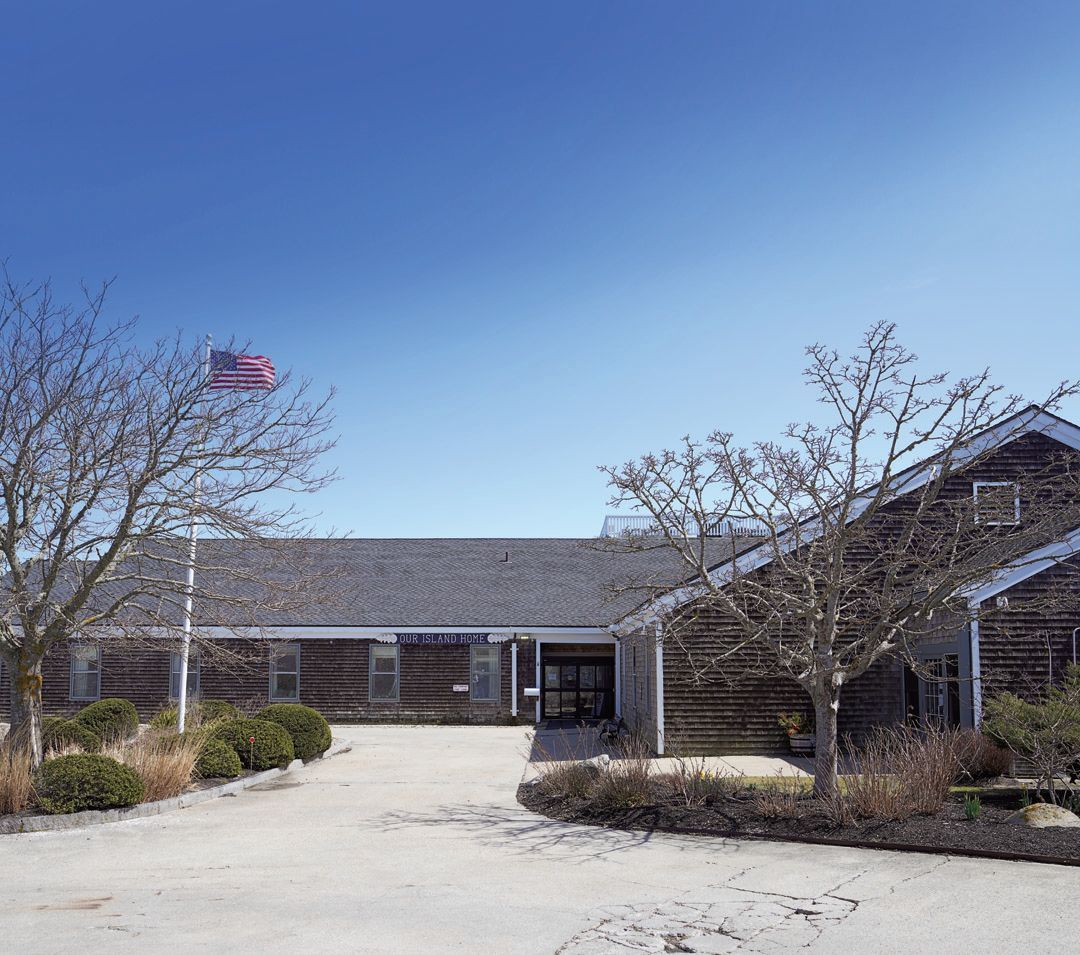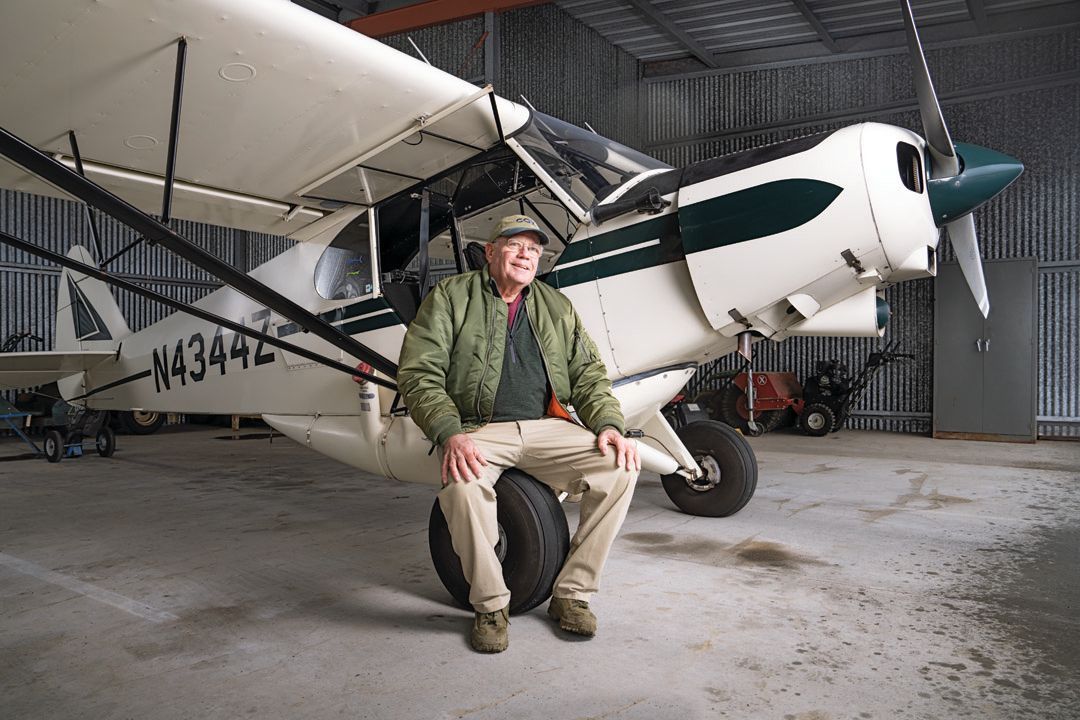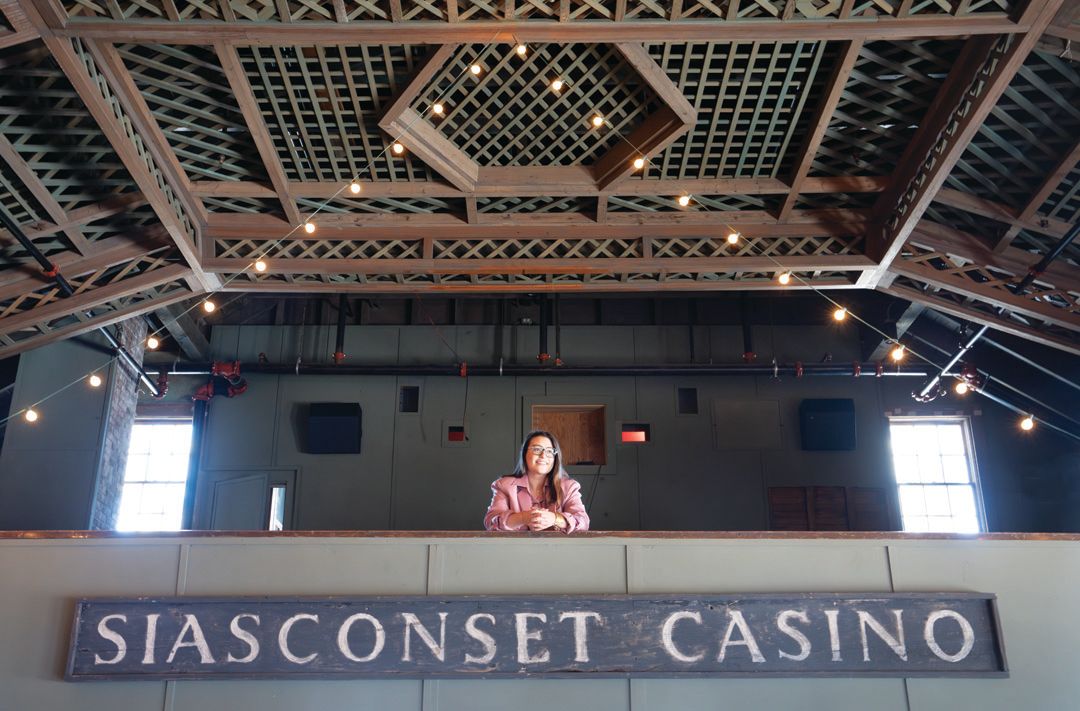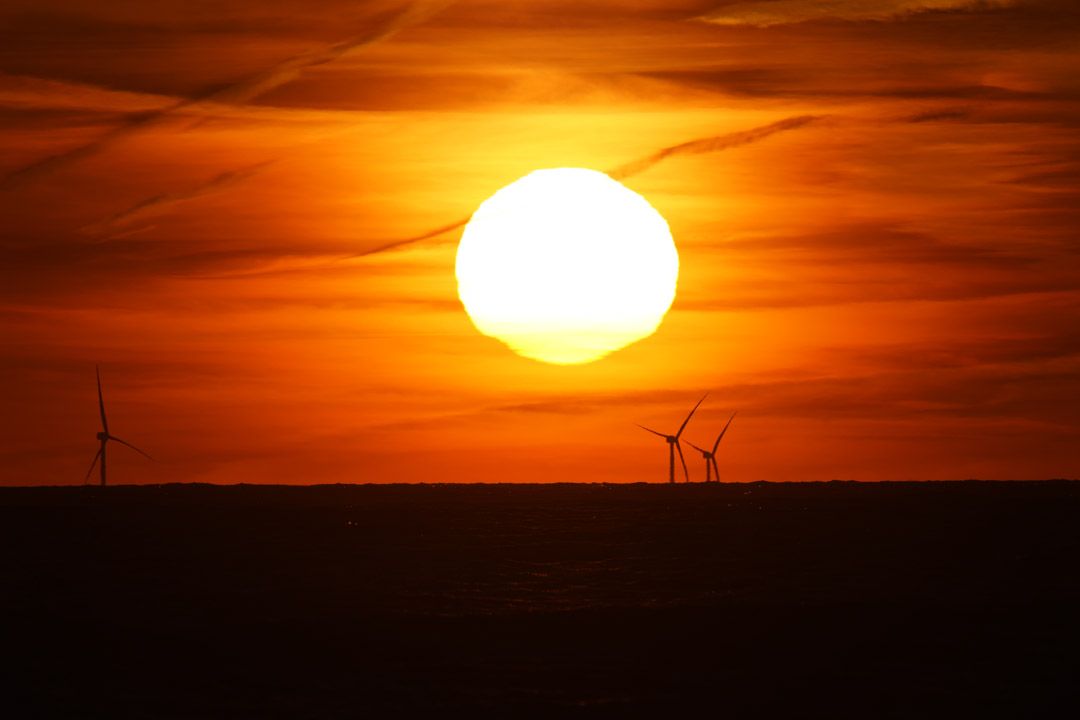Growing Native
Landscaping that’s both eco-friendly and beautiful
Written by Larry Lindner
Photography by Kit Noble
When Polpis resident Will Kinsella learned that mowing his 12-acre lawn was the carbon-spewing equivalent of driving all the way from Nantucket to California, he stopped mowing. He let his land go to seed—literally.
“I collected seed heads on the property that were native to Nantucket using a plant identifier app called PictureThis, mixed them with some topsoil, and then just kind of scratched the area and hand-broadcasted the seeds,” Kinsella said. By the next summer, his land was lush with native Nantucket flowers that finally escaped being mowed down before they could bloom—wild geraniums, bog violets and asters among them. There were also the tallgrasses he had planted, which grew alongside other native grasses no longer threatened by the lawn mower’s blades. “The wavelike sway and swish of the grasses inthe breeze is magical,” he said.
Kinsella is one of a growing number of Nantucket property owners who are ditching their lawns and the so-called rose and hydrangea monoculture for more eco-friendly gardens that are no less lovely to look at. The Nantucket Land and Water Council is all for the shift—so much so that it has started an initiative called Grow Native for Nantucket, a program designed to help islanders swap out traditional grass and non-native plants for indigenous species that are better for the environment.
Non-native plants typically require more pesticides and herbicides that can be harmful to pets and people. Nutrients from those pesticides and herbicides can also seep into groundwater and eventually to Nantucket’s harbors and the ocean, where they harm marine life. Native plants, on the other hand, often don’t require as much water to thrive because their long roots allow them to take up water from deeper in the ground.
A conventional lawn requires roughly 100 gallons of water for every 1,000 square feet on a hot summer day, according to Rita Higgins of Wilder Designs Studio, who along with Julie Wood of the landscaping firm Hither Creek Gardener helped Kinsella plan his meadowland. “A meadow just needs water to establish it and then zero inputs for fertilizer, herbicides and pesticides,” Higgins said.
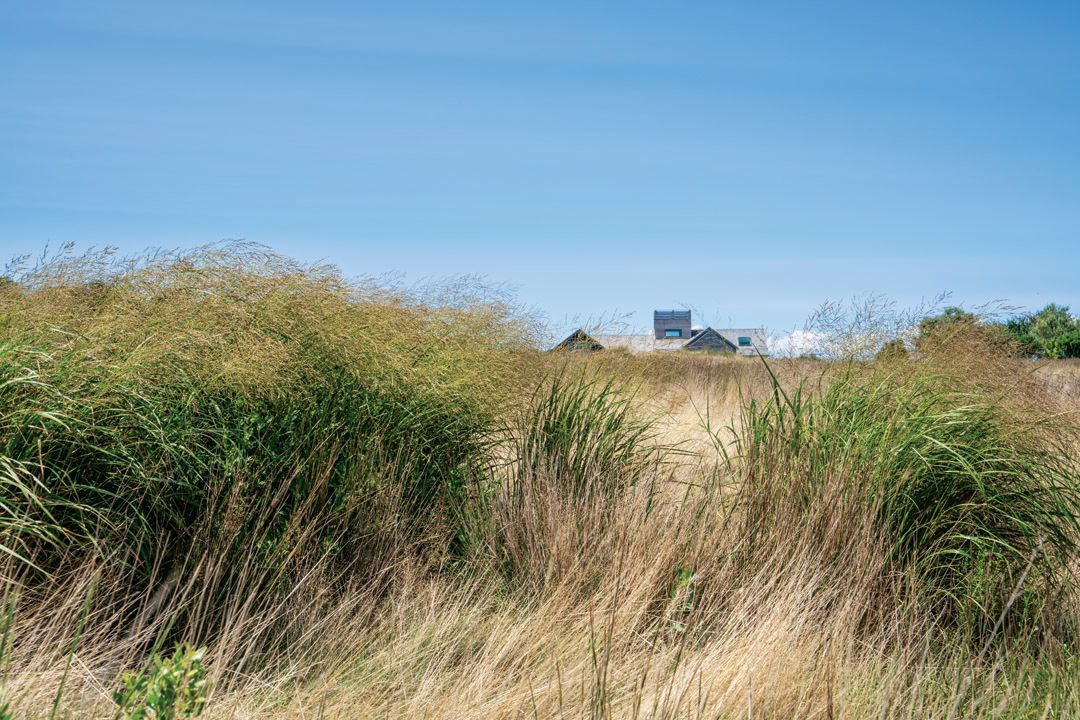
Those same long roots have other benefits as well. They can bolster coastal resilience by strengthening a coastal area to combat erosion. They also encourage habitat diversity. This becomes abundantly clear at Peter Kellner’s own meadow landscape in Quidnet, a sprawling landscape where elementary school children from the Nantucket Lighthouse School visit on field trips to learn about pollinating species that feed on the island’s native plants and grasses. Those pollinators were largely missing from Kellner’s property before he converted one of his six acres of green lawn into a meadow.
It’s not just that Kellner now gets to see more butterflies, hummingbirds and bees (enough for him to have an apiary that produces what he calls “fantastic honey”). He also enjoys the aesthetic of the meadow itself. “I hate lawns that look like they’re a golf course,” he said. “Nantucket was never meant to be suburbia.
Emily Molden, the executive director of the Nantucket Land and Water Council, points out that with eco-friendly landscaping, residents can still manicure spaces and keep their lawns. But at the same time, they can reduce the size of their laws and promote biodiversity. “It’s not all or nothing,” she said. Higgins agreed. “There is room for hydrangeas and roses in an ecological landscape,” she said. “But even just moving hydrangea bushes to a spot where they would require less water would help.
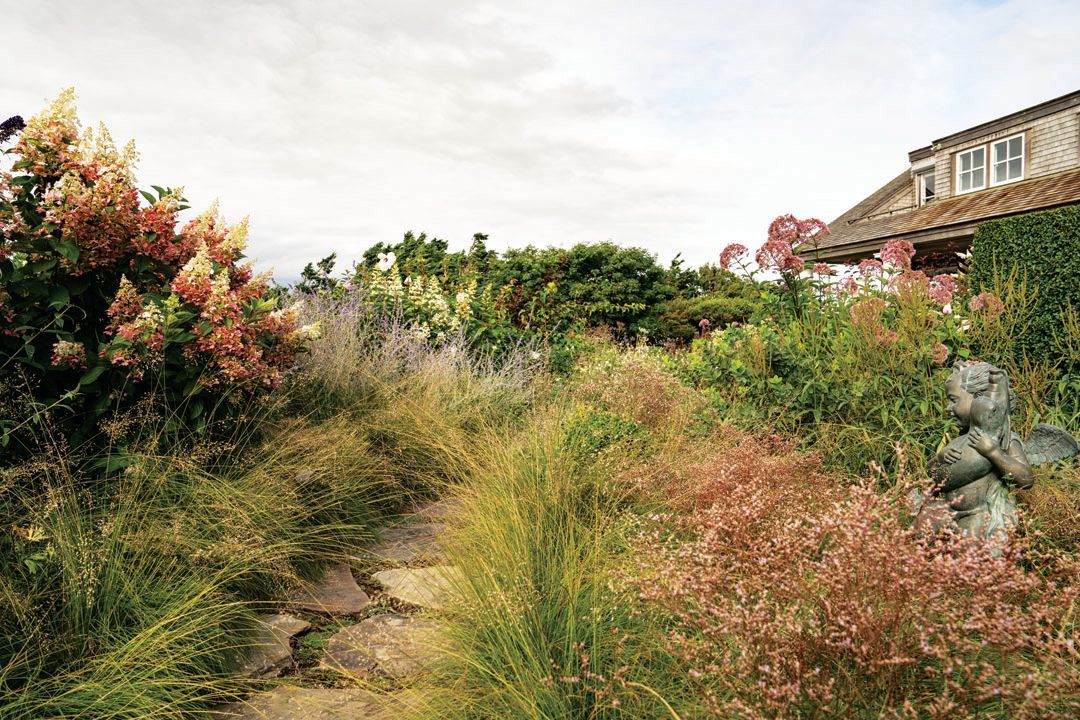
Island resident Susan Burke, an expert gardener, believes in an integrated approach as well. “We planted the bank with natives,” she said, crediting her grandmother for her interest in preserving the environment by making her learn the difference between native and non-native plants when she was a girl. But other parts of her property are more of a mixture. “If it were all ecological, that would be boring,” she said. “In the summer, you want some perky annuals to come in.”
Julie Jordin, a landscape designer on the island who helped Burke create more eco-friendly landscapes while keeping them beautiful, said her design mantra is that around the house or in special spaces, it’s fine to plant non-native species. But as you move farther from the house, she said it really should be two-thirds for the birds. Surrounding a property line with privet hedges isn’t going to do it, she added. Instead, there are native plants that act like privet but require less maintenance.
Those who are thinking of growing native should keep in mind that an eco-friendly garden has a wilder aesthetic, as Higgins puts it. “It becomes more about exerting less control over the land with water and chemicals, and inviting a willingness to let things evolve the way they want to,” she said. “People love a tidy garden, but as they see the increase in bird and butterfly activity, their perspective on what’s beautiful changes.”
For resources and tips on how to get started on an eco-friendly garden, visit nantucketlandandwater.org. The Nantucket Land & Water Council will also feature landscape architect Edwina von Gal at its August 5 annual meeting.

